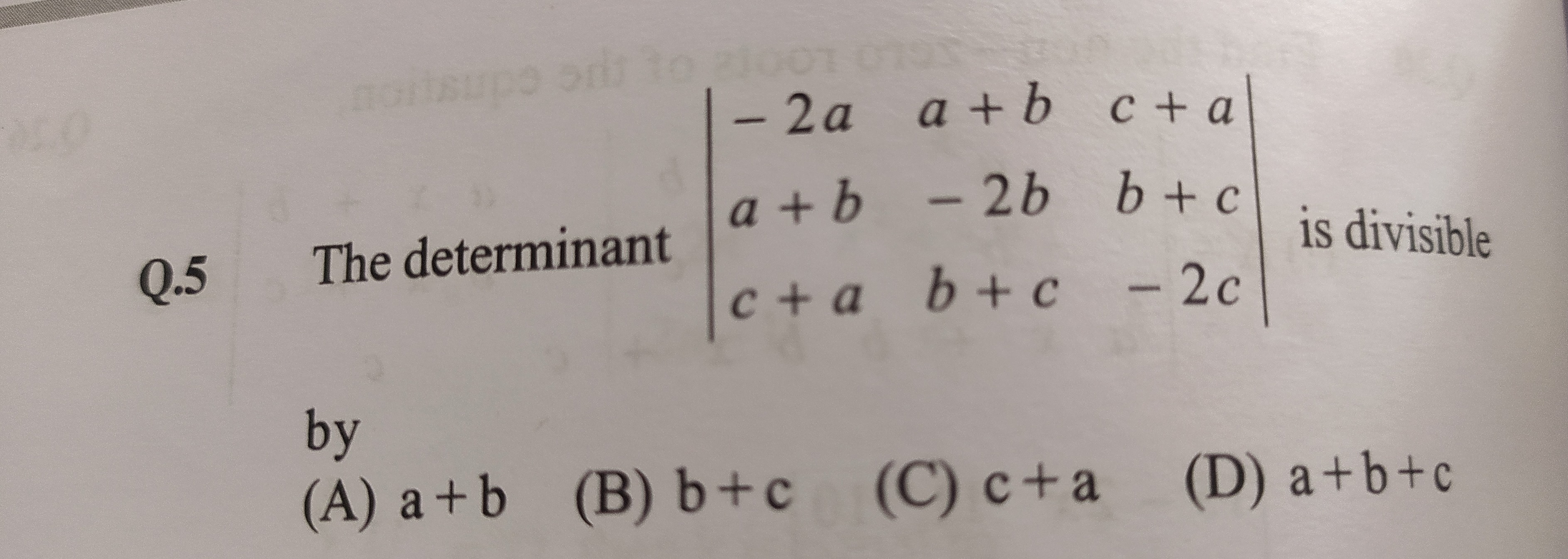Question
Question: The determinant $\begin{vmatrix} -2a & a+b & c+a \\ a+b & -2b & b+c \\ c+a & b+c & -2c \end{vmatrix...
The determinant
−2aa+bc+aa+b−2bb+cc+ab+c−2c is divisible
by

a+b
b+c
c+a
a+b+c
(A), (B), (C)
Solution
We are given the determinant
D=−2aa+bc+aa+b−2bb+cc+ab+c−2c.Step 1. Check the factor (a+b):
Set a+b=0 (i.e. a=−b). For any value of c, the entries in the first two rows become related. For example, choose a=−1, b=1 (so a+b=0), and any c (say c=2). The determinant then becomes
D=−2(−1)=20c+a=10−2(1)=−2b+c=3c+a=2+(−1)=1b+c=1+2=3−2c=−4.A quick calculation shows D=0. Hence, (a+b) is a factor.
Step 2. Check the factor (b+c):
Set b+c=0 (i.e. c=−b). For example, choose b=−1, c=1, and let a=2. Then
D=−2(2)=−4a+b=1c+a=3a+b=2+(−1)=1−2(−1)=20c+a=1+2=30 (since b+c=0)−2(1)=−2.The determinant computes to 0, so (b+c) is a factor.
Step 3. Check the factor (c+a):
Set c+a=0 (i.e. c=−a). For instance, choose a=1, c=−1 and b=2. Then
D=−2(1)=−2a+b=30a+b=1+2=3−2(2)=−4b+c=10b+c=2+(−1)=1−2(−1)=2.Again, a quick calculation shows D=0. Hence, (c+a) is a factor.
Step 4. Check the factor (a+b+c):
If we set a+b+c=0, then the determinant should be 0 if (a+b+c) is a factor. However, testing with a=1, b=2, and c=−3 (so 1+2−3=0), we get
D=−23−23−4−1−2−16.A careful computation shows D=0 (in fact, D=24 in this case). Thus, (a+b+c) is not a factor.
The determinant is divisible by (a+b), (b+c), and (c+a).
